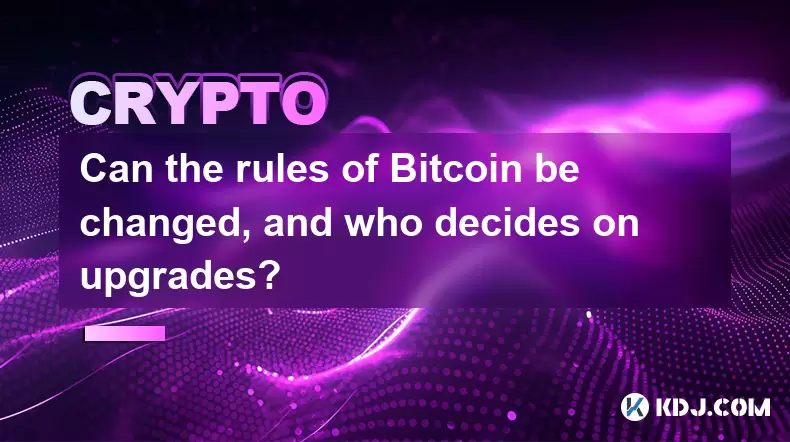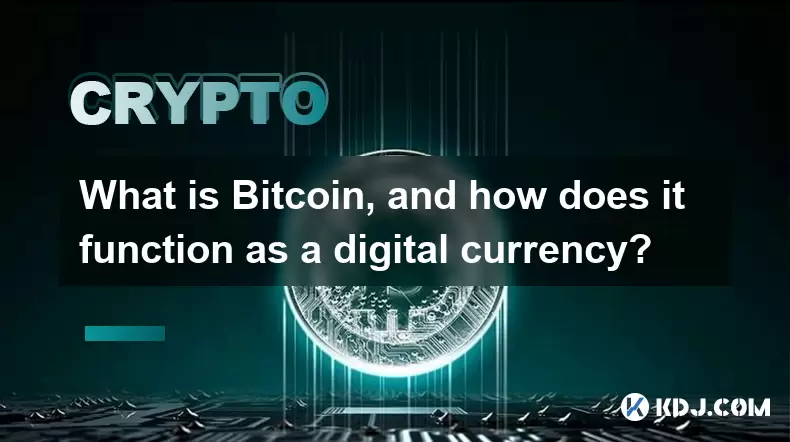-
 Bitcoin
Bitcoin $113900
-1.39% -
 Ethereum
Ethereum $3517
-4.15% -
 XRP
XRP $3.009
1.59% -
 Tether USDt
Tether USDt $0.9997
-0.04% -
 BNB
BNB $766.8
-1.41% -
 Solana
Solana $164.6
-2.38% -
 USDC
USDC $0.9998
-0.02% -
 TRON
TRON $0.3277
0.65% -
 Dogecoin
Dogecoin $0.2023
-1.67% -
 Cardano
Cardano $0.7246
0.05% -
 Hyperliquid
Hyperliquid $38.27
-4.77% -
 Sui
Sui $3.528
-0.52% -
 Stellar
Stellar $0.3890
-0.73% -
 Chainlink
Chainlink $16.16
-2.69% -
 Bitcoin Cash
Bitcoin Cash $539.9
-4.38% -
 Hedera
Hedera $0.2425
-2.00% -
 Avalanche
Avalanche $21.71
-0.97% -
 Toncoin
Toncoin $3.662
5.73% -
 Ethena USDe
Ethena USDe $1.000
-0.02% -
 UNUS SED LEO
UNUS SED LEO $8.964
0.35% -
 Litecoin
Litecoin $107.7
2.33% -
 Shiba Inu
Shiba Inu $0.00001223
-0.40% -
 Polkadot
Polkadot $3.617
-0.97% -
 Uniswap
Uniswap $9.052
-2.49% -
 Monero
Monero $295.1
-3.79% -
 Dai
Dai $0.9999
0.00% -
 Bitget Token
Bitget Token $4.315
-1.85% -
 Pepe
Pepe $0.00001060
0.11% -
 Cronos
Cronos $0.1342
-2.72% -
 Aave
Aave $256.0
-0.87%
What is the total supply limit of Bitcoin?
Bitcoin's predetermined supply of 21 million coins, coupled with its halving mechanism, ensures a gradually diminishing issuance rate, fostering scarcity and potentially influencing its value and volatility.
Sep 27, 2024 at 05:06 pm

Understanding the Finite Supply of Bitcoin
Bitcoin, the pioneering cryptocurrency, has a unique characteristic that sets it apart from many other digital assets: a predetermined total supply. Unlike fiat currencies, which can be printed at will, Bitcoin's creation and issuance are governed by a specific set of rules enshrined in its underlying blockchain technology.
The Total Supply Limit
- 21 Million: The total supply of Bitcoin is capped at 21 million coins. This limit was hardcoded into Bitcoin's genesis block by its enigmatic creator, Satoshi Nakamoto.
Purpose: Nakamoto's decision to limit Bitcoin's supply was likely motivated by a desire to:
- Prevent inflation
- Foster scarcity and value
- Create a finite and immutable digital asset
The Halving Mechanism
- Regular Halving: Bitcoin's total supply is gradually released through a process known as "halving," which occurs every four years or approximately every 210,000 blocks.
- Reduced Block Rewards: Each time a halving occurs, the reward for mining a single Bitcoin block is cut in half. This mechanism slows the rate at which new Bitcoins enter circulation.
Current Status
- Mined Bitcoins: As of January 2023, approximately 19.2 million Bitcoins have already been mined, leaving an estimated 1.8 million coins to be mined in the future.
- Expected Exhaustion: At the current rate of halving and mining, it is estimated that the last Bitcoin will be mined around the year 2140.
Implications
- Scarcity and Value: The finite supply of Bitcoin has a significant impact on its value. Scarcity creates demand, as it limits the available supply and encourages individuals to acquire and hold the asset.
- Volatility: Bitcoin's finite supply can also contribute to its price volatility. As the remaining supply dwindles, each available Bitcoin becomes more valuable, potentially leading to sharp price fluctuations.
Conclusion
Bitcoin's total supply limit of 21 million coins is a fundamental aspect of its design. It serves as a mechanism to prevent inflation, foster scarcity, and create a finite digital asset. The halving process gradually releases new Bitcoins onto the market while ensuring that the total supply is eventually exhausted. This unique feature has profound implications for Bitcoin's value, scarcity, and volatility.
Disclaimer:info@kdj.com
The information provided is not trading advice. kdj.com does not assume any responsibility for any investments made based on the information provided in this article. Cryptocurrencies are highly volatile and it is highly recommended that you invest with caution after thorough research!
If you believe that the content used on this website infringes your copyright, please contact us immediately (info@kdj.com) and we will delete it promptly.
- Crypto Donations, Trump PAC, and Bitcoin: A New York Minute on Political Coin
- 2025-08-02 20:30:12
- Crypto Market Under Pressure: Bearish Momentum and Rising Volatility Take Hold
- 2025-08-02 20:30:12
- DeFi Token Summer Gains: Is Mutuum Finance the Real Deal?
- 2025-08-02 18:30:12
- Bitcoin, Realized Price, and the Top: Are We There Yet?
- 2025-08-02 18:30:12
- Dogwifhat (WIF) Rally: Will the Meme Coin Bite Back?
- 2025-08-02 19:10:12
- PayFi Heats Up: Tron's AMA Recap & TRX's Bullish Nasdaq Debut
- 2025-08-02 19:10:12
Related knowledge

What is the difference between holding Bitcoin on an exchange versus in a personal wallet?
Aug 02,2025 at 03:15pm
Understanding Custodial vs Non-Custodial ControlWhen holding Bitcoin on an exchange, users are essentially entrusting their assets to a third party. E...

Can governments shut down or ban Bitcoin?
Aug 02,2025 at 09:44am
Understanding Bitcoin’s Decentralized StructureBitcoin operates on a decentralized peer-to-peer network, meaning it is not controlled by any single en...

Can the rules of Bitcoin be changed, and who decides on upgrades?
Aug 02,2025 at 06:36am
Understanding Bitcoin's Governance ModelBitcoin operates without a central authority, which means no single entity has the power to unilaterally chang...

Who controls the Bitcoin network if there is no central company or bank?
Aug 02,2025 at 06:01pm
Understanding Decentralized Control in BitcoinThe Bitcoin network operates without a central authority, which raises the question of who controls it. ...

What is Bitcoin, and how does it function as a digital currency?
Aug 02,2025 at 04:01am
Understanding Bitcoin as a Digital CurrencyBitcoin is a decentralized digital currency that operates without the need for a central authority such as ...

What is the significance of the 21-week EMA in a Bitcoin bull market?
Jul 10,2025 at 06:56pm
Understanding the 21-Week EMA in Cryptocurrency AnalysisThe 21-week Exponential Moving Average (EMA) is a technical indicator widely used by traders a...

What is the difference between holding Bitcoin on an exchange versus in a personal wallet?
Aug 02,2025 at 03:15pm
Understanding Custodial vs Non-Custodial ControlWhen holding Bitcoin on an exchange, users are essentially entrusting their assets to a third party. E...

Can governments shut down or ban Bitcoin?
Aug 02,2025 at 09:44am
Understanding Bitcoin’s Decentralized StructureBitcoin operates on a decentralized peer-to-peer network, meaning it is not controlled by any single en...

Can the rules of Bitcoin be changed, and who decides on upgrades?
Aug 02,2025 at 06:36am
Understanding Bitcoin's Governance ModelBitcoin operates without a central authority, which means no single entity has the power to unilaterally chang...

Who controls the Bitcoin network if there is no central company or bank?
Aug 02,2025 at 06:01pm
Understanding Decentralized Control in BitcoinThe Bitcoin network operates without a central authority, which raises the question of who controls it. ...

What is Bitcoin, and how does it function as a digital currency?
Aug 02,2025 at 04:01am
Understanding Bitcoin as a Digital CurrencyBitcoin is a decentralized digital currency that operates without the need for a central authority such as ...

What is the significance of the 21-week EMA in a Bitcoin bull market?
Jul 10,2025 at 06:56pm
Understanding the 21-Week EMA in Cryptocurrency AnalysisThe 21-week Exponential Moving Average (EMA) is a technical indicator widely used by traders a...
See all articles

























































































